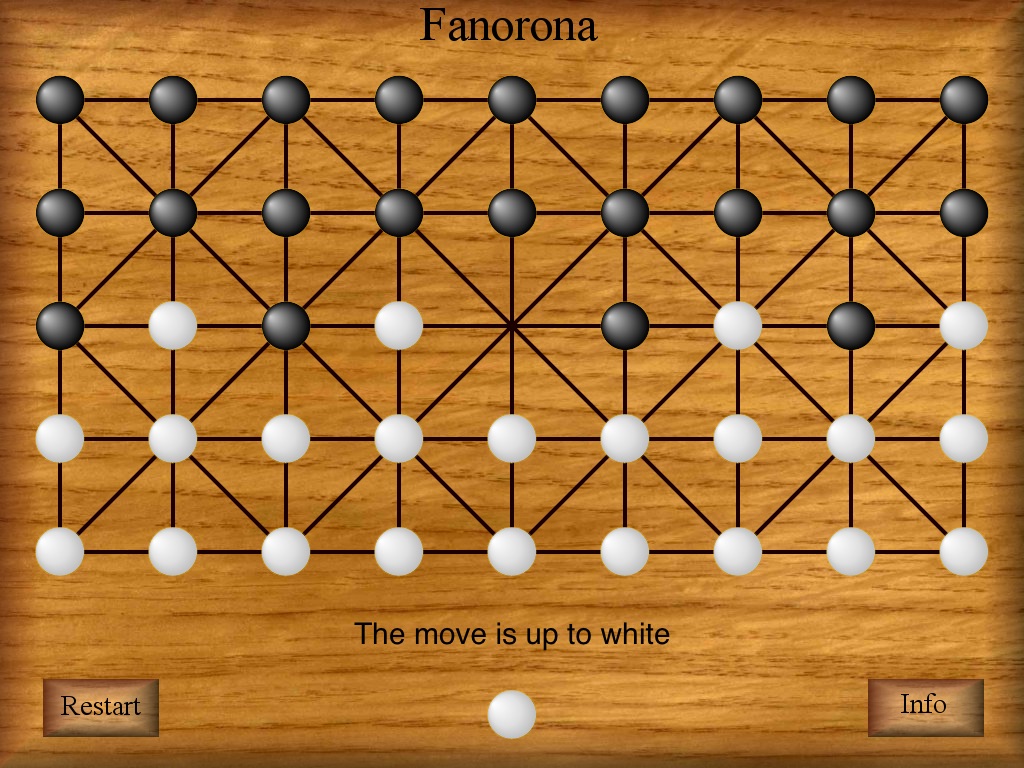
Fanorona for iPad
Fanorona is a two-player board game, originated in Madagascar.
Black and white pieces, twenty-two each, are arranged on all points but the center.
The objective of the game is to capture all the opponents pieces.
The game is a draw if neither player succeeds in this.
Capturing is done by either approaching or withdrawing from opponents pieces.
The board consists of lines and intersections, creating a grid with 5 rows and 9 columns,
subdivided diagonally to form part of the tetrakis square tiling of the plane.
A line represents the path along which a stone can move during the game.
There are weak and strong intersections.
At a weak intersection it is only possible to move a stone horizontally and vertically,
while on a strong intersection it is also possible to move a stone diagonally.
A stone can only move from one intersection to an adjacent intersection.
Players alternate turns, starting with White.
A white/black ball near the screen bottom signals the current player...
We distinguish two kinds of moves, non-capturing and capturing moves.
A non-capturing move is called a paika move.
A paika move consists of moving one stone along a line to an adjacent intersection.
Capturing implies removing one or more pieces of the opponent.
It can be done in two ways, either (1) by approach or (2) by withdrawal.
An approach is moving the capturing stone to a point adjacent to an opponent stone
provided that the stone is on the continuation of the capturing stones movement line.
A withdrawal works analogously to an approach except that the movement is away from the opponent stone.
When an opponent stone is captured, all opponent pieces in line behind that stone
(as long as there is no interruption by an empty point or an own stone) are captured as well.
If a player can do an approach and a withdrawal at the same time, he has to choose which one he plays.
The game ends when one player captures all stones of the opponent.
If neither player can achieve this, the game is a draw.
